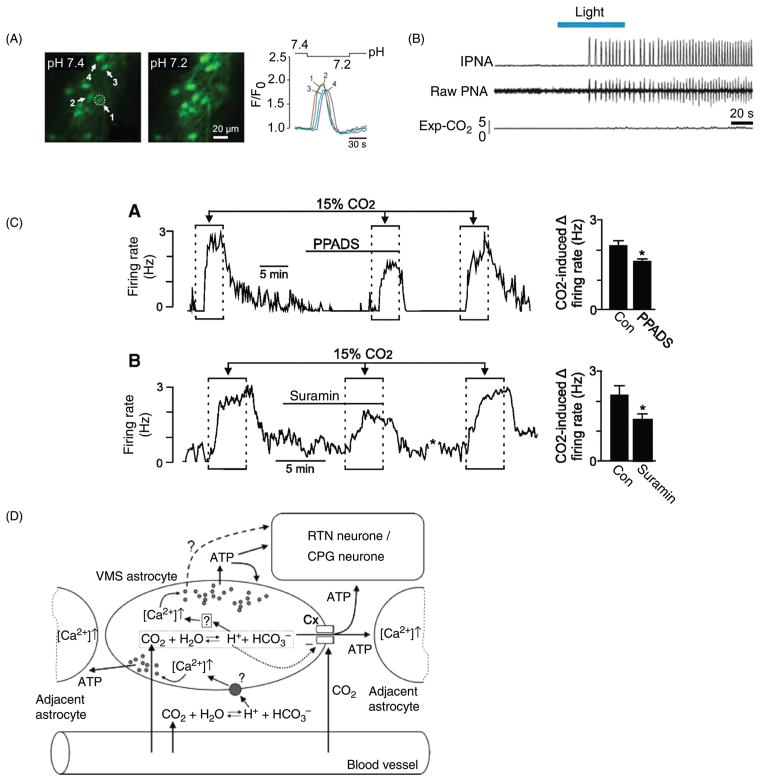Figure 7.
Glial cells and central respiratory chemosensitivity. (A) Acidification increases intracellular calcium fluorescence in medullary astrocytes [from Gourine et al. (146) reprinted with permission from AAAS]. (B) Optogenetic depolarization of ChR2-expressing ventrolateral medullary astrocytes activates the phrenic outflow in an anesthetized rat. Note the very slow onset of the response to light and its persistence [adapted, with permission, from (146) reprinted with permission from AAAS]. (C) Activation of RTN neurons by CO2 in a slice of neonate rat brain is attenuated by application of the P2 receptor antagonists PPADS or suramin. Summary data (right panels): about a quarter of the overall response of RTN neurons to 15% CO2 could be mediated by ATP release in this preparation [reproduced from Wenker et al. (453) with permission]. (D) Schema of the contribution of ventral medullary surface (VMS) astrocytes to central respiratory chemosensitivity according to (145) [after Gourine and Kasparov, Exp. Phsiol. (96), 2011 reprinted with permission from John Wiley & Sons]. VMS astrocytes are thought to mediate the hypercapnic ventilatory reflex by simultaneously activating RTN neurons and undefined components of the central pattern generating (CPG). ATP release by astrocytes may be a calcium-dependent exocytotic process triggered by intracellular acidification and/or a leak through connexin channels (Cx26 primarily) opened by molecular CO2 via carbamylation.

